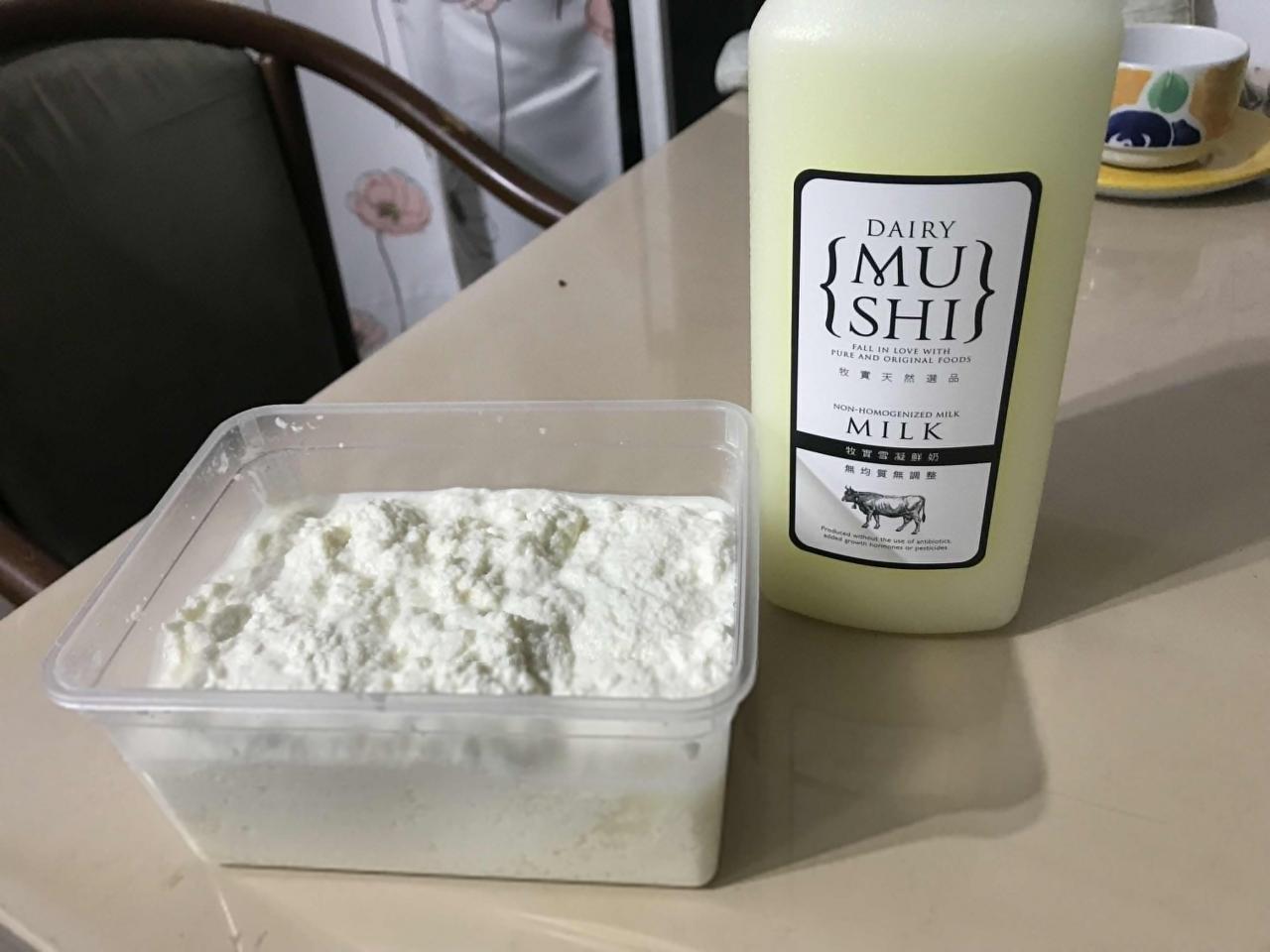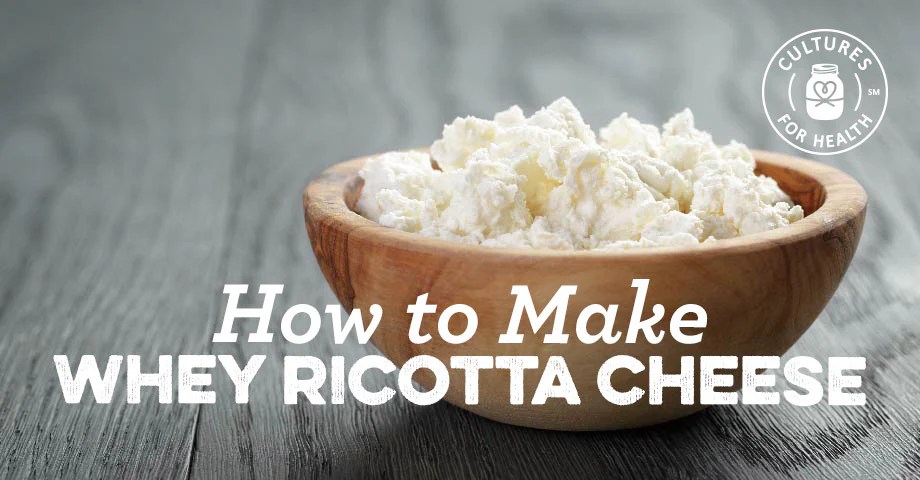Ricotta cheese recipe from whey is a fantastic way to transform leftover whey into a creamy, delicious treat! This guide will walk you through the process, from understanding the nutritional value to mastering various recipes and variations. Get ready to explore the world of homemade ricotta and discover how versatile this cheese is!
This comprehensive guide delves into the fascinating world of ricotta cheese made from whey, offering a journey through history, nutrition, and various recipes. We’ll explore the cultural significance, nutritional benefits, and various culinary applications, from savory dishes to sweet desserts. Prepare to be amazed!
Ingredients and Substitutions

The creation of ricotta cheese from whey, a byproduct of cheesemaking, offers a unique culinary experience. This process allows us to transform a substance often discarded into a valuable ingredient. Understanding the precise ingredients and their significance is key to achieving a desirable outcome.The following discussion delves into the components essential for a successful recipe, highlighting the importance of quality ingredients and exploring potential substitutions, ultimately guiding you towards optimal results.
Common Ingredients
This recipe typically relies on a few key ingredients. Fresh, high-quality whey is paramount. The consistency and flavour of the final product are significantly influenced by the quality of the whey. Other ingredients often include milk or cream, for added richness and texture, and a touch of salt to enhance the flavour profile. Additionally, some recipes incorporate citric acid or vinegar to help the curdling process.
A variety of herbs and spices can be used for flavoring.
Importance of High-Quality Whey
The quality of the whey directly impacts the final product’s texture, taste, and overall success. Whey, being a liquid by-product of cheesemaking, varies in its composition. Higher-quality whey, usually obtained from fresh cheese curds, will yield a richer and more flavorful ricotta. Lower-quality whey may result in a thinner, less substantial ricotta.
Transform leftover whey into a creamy, delicious ricotta cheese recipe. It’s a fantastic way to use up those whey leftovers and embrace the sustainable, resourceful spirit of “home is where you park it” home is where you park it. This simple recipe makes your kitchen a culinary wonderland, proving that even the smallest scraps can yield big rewards.
Enjoy your homemade ricotta cheese!
Potential Substitutions
Certain ingredients can be substituted, but the results may vary. Milk or cream can be replaced with other dairy products, like yogurt or sour cream, to alter the texture and richness. Substituting other types of dairy may affect the final product’s tanginess. Salt can be replaced with other seasonings, but the level of saltiness will change.
Storing Whey Ricotta Cheese
Proper storage is crucial for preserving the quality and safety of the whey ricotta. Store the ricotta in an airtight container in the refrigerator. The refrigerated environment will help maintain the cheese’s freshness and prevent spoilage. Optimal storage time is typically around 3-5 days.
Utilizing Leftover Whey, Ricotta cheese recipe from whey
Leftover whey, while not a primary ingredient in the ricotta cheese recipe, has various applications. It can be used as a base for soups, sauces, or gravies. Its delicate flavour can enhance the taste of various dishes. Alternatively, it can be used in baking, adding moisture and a subtle tanginess to baked goods. You could also use it as a marinade for meat.
Unlock the delicious potential of ricotta cheese made from whey! This simple recipe is a fantastic way to utilize leftover whey, a byproduct of making other dairy products. Discover how you can incorporate this nutritious cheese into your diet, potentially aiding your weight loss journey. Check out the sparc weight loss package price to explore effective weight management programs.
The ricotta cheese recipe from whey is a simple and delicious way to incorporate healthy eating into your life.
Health Benefits and Nutritional Information
Ricotta cheese, crafted from whey, presents a unique opportunity to harness the nutritional power of dairy in a delectable form. This process, drawing upon the byproducts of cheesemaking, allows us to explore the hidden potential within whey and discover the nutritional profile it imparts to the ricotta. The resulting product offers a compelling alternative to traditional ricotta, promising a potentially richer and more beneficial culinary experience.Whey, a byproduct of cheese production, is a valuable source of protein and other essential nutrients.
Its inclusion in the ricotta-making process enhances the nutritional profile of the final product, making it a potential powerhouse of sustenance. This approach underscores the sustainable and resourceful utilization of dairy resources, minimizing waste and maximizing nutritional output.
Nutritional Benefits of Whey-Based Ricotta
Whey protein is a complete protein, containing all essential amino acids vital for bodily functions. This characteristic contributes significantly to the protein content of whey-based ricotta. Its high protein content can aid in muscle repair and growth, making it a valuable addition to a balanced diet.
Role of Whey in Providing Essential Nutrients
Whey is rich in bioactive peptides, which are short chains of amino acids that may offer various health benefits, including improved digestion and enhanced immune function. These peptides, present in whey, contribute to the overall health benefits associated with consuming whey-based ricotta.
Comparison of Nutritional Content with Other Dairy Products
Whey-based ricotta typically has a lower fat content compared to some traditional ricotta cheese varieties, which allows for a lighter and potentially healthier option. This lower fat content, coupled with a high protein profile, makes it a more suitable choice for individuals managing their dietary fat intake.
Potential Health Benefits of Consuming Whey Ricotta
The high protein content in whey ricotta can contribute to satiety, potentially aiding in weight management by reducing overall calorie intake. Furthermore, the presence of essential nutrients like calcium and vitamin D in whey ricotta may contribute to bone health and overall well-being.
Summary Table of Nutritional Value
| Nutrient | Approximate Value (per 100g) |
|---|---|
| Protein | 15-20g |
| Fat | 2-5g |
| Carbohydrates | 2-5g |
| Calcium | 100-200mg |
| Vitamin D | 0.5-1mcg |
| Sodium | 50-100mg |
Note: Nutritional values may vary slightly depending on the specific preparation and ingredients used. Consult with a healthcare professional for personalized dietary advice.
Last Recap

In conclusion, crafting ricotta cheese from whey is a rewarding culinary adventure. From understanding the process to mastering different recipes, this guide provides a complete toolkit for success. Enjoy the process, experiment with variations, and savor the unique flavor and texture of your homemade ricotta! It’s a truly satisfying experience, and you’ll be proud of your culinary creation!
FAQ Insights: Ricotta Cheese Recipe From Whey
How long does it take to make ricotta cheese from whey?
The preparation time for ricotta cheese from whey typically varies depending on the specific recipe. Some recipes can be ready in under an hour, while others might take a bit longer. It truly depends on the chosen method and recipe.
What kind of whey is best for ricotta?
High-quality, fresh whey is key for optimal results. Look for whey that’s been collected and processed properly to avoid any unwanted flavors or textures. Fresh whey will yield the best results for your ricotta.
Can I use different types of milk to make the whey?
While cow’s milk is the most common choice for whey, you can experiment with other types of milk like goat’s or sheep’s milk to make whey, which can then be used in your ricotta recipe. Keep in mind that the taste of the ricotta might vary slightly.
What are some common mistakes when making ricotta from whey?
One common mistake is not using enough whey, which can result in a ricotta that isn’t as smooth or creamy. Another common mistake is not stirring the mixture properly during the process, which can cause lumps or uneven texture. Patience and careful stirring are key to success!
